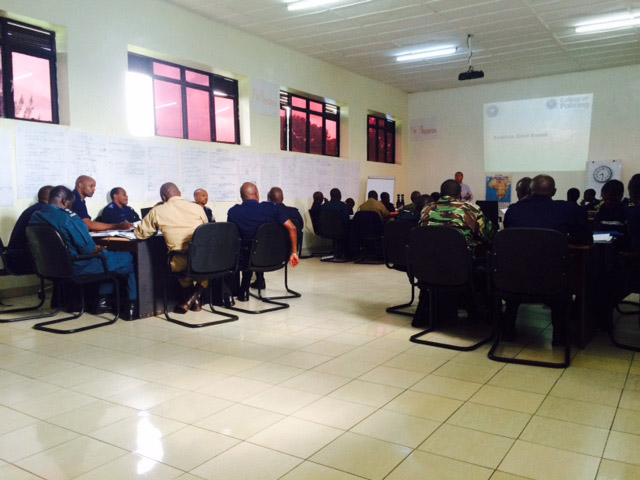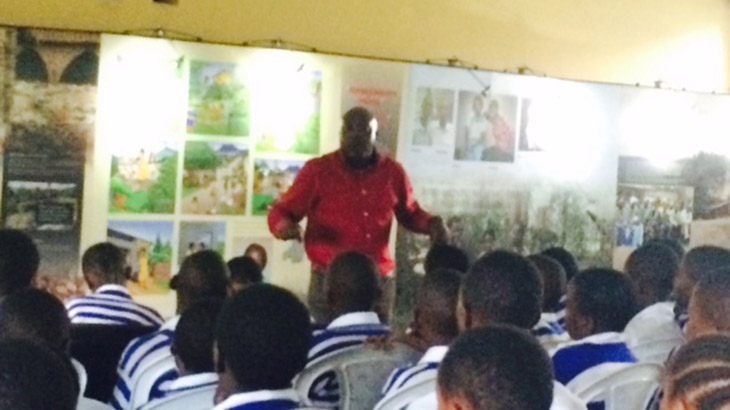Day 6: South East Central African Strategic Command Course, Musanze, Rwanda
Today is the start of the three-day strategic command exercise, a key part of the course. It is a paper feed process based on the operation the students planned last Friday in class.

The students getting to grips with the event information (Roger Gomm)
After an introduction to the process and briefing, the students working in their groups strategically assess the updated information and intelligence. They are asked to select the first Gold/Strategic Commander and Loggist (recording decisions) and explain the selections in the log.
Throughout the day the groups receive updates, which they are required to assess from a strategic perspective and take appropriate decisions, ensuring they are then recorded. As you would expect, issues develop during the operation that require some thinking to ensure that the potential impacts are understood before decisions are made, reflecting back to last week’s lessons on situational awareness.
Schools' Programme Post-Genocide Restoration and Peace building.
This evening we visited the local church hall to see a national schools project. This session had 50 school children, aged seven to 10 from a local school.

The process examines the root causes of the 1994 genocide and Rwanda’s ongoing efforts in fostering peace, unity, and reconciliation among its people. This programme examines the origins of conflict in Rwanda; the social, human, and psychological impacts of genocide; and the challenges and opportunities of post-conflict restoration.
For this age group, three real-life personal stories from the conflict were used to highlight the impact on individuals and families. The stories are:
-
A young Hutu girl rescuing a baby from a dying Tutsi mother, and despite others trying to prevent her, she cared for the child and she survived;
-
A young Tutsi boy who witnessed crimes by Hutus, he survived and later spoke as a witness at court; and
-
The story of a gang of Hutus who killed Tutsi and the reason they gave for the killing.
The children were completely engaged in the lessons and hopefully it will prevent any future conflict.
Roger Gomm
Thumbnail image: EWSA Commemoration to remember colleagues killed during the Genocide against the Tutsi (photo: Kwibuka Rwanda): Staff of Rwanda’s Energy, Water and Sanitation Authority (EWSA), past and present, remembered their colleagues who were killed in the 1994 Genocide against the Tutsi. 180 former employees of ELECTROGAZ were among the more than one million Rwandans massacred over a period of just 100 days
Roger Gomm, 04/05/2015